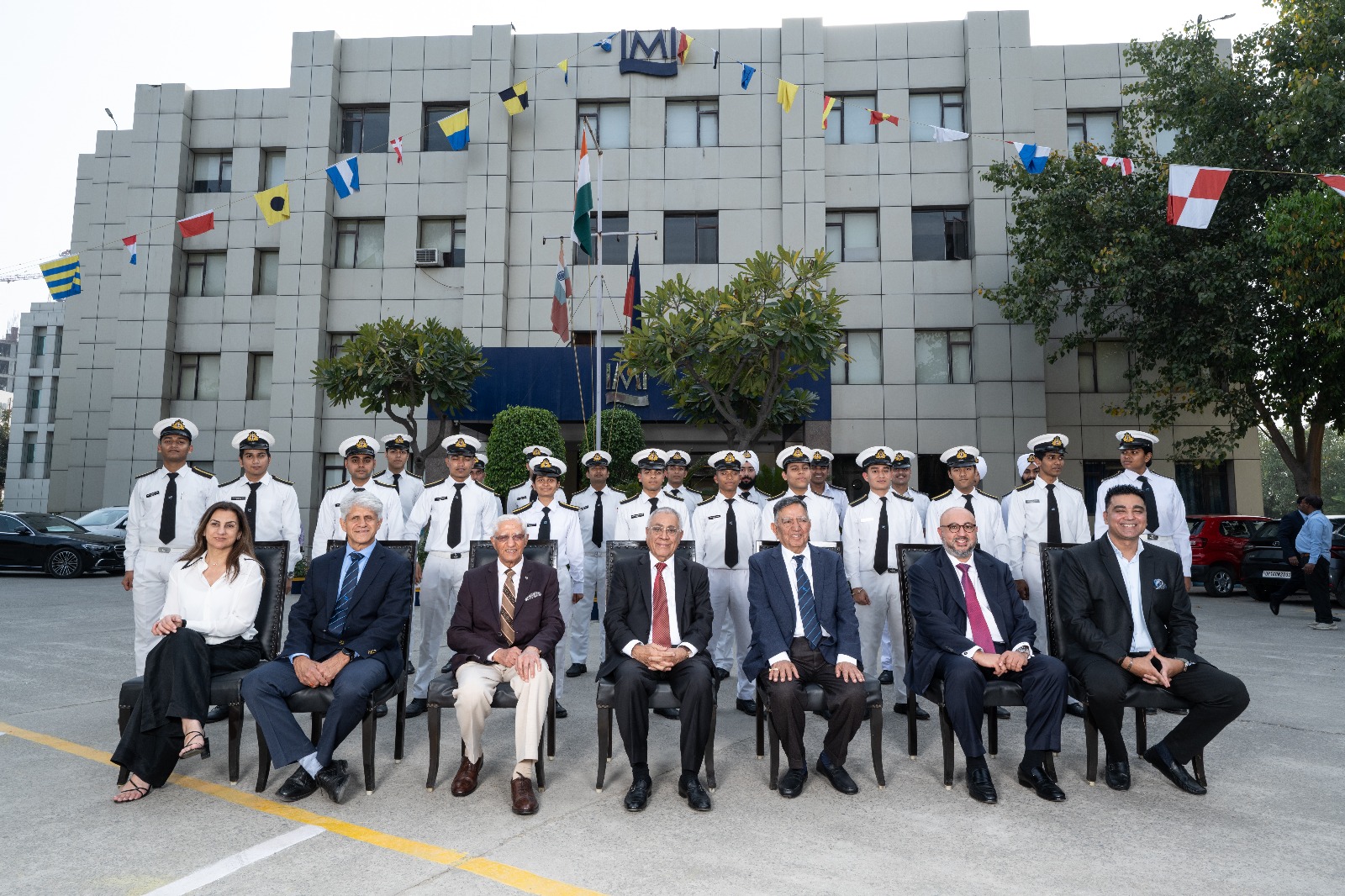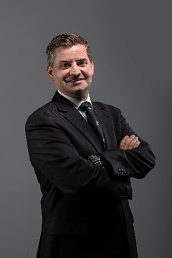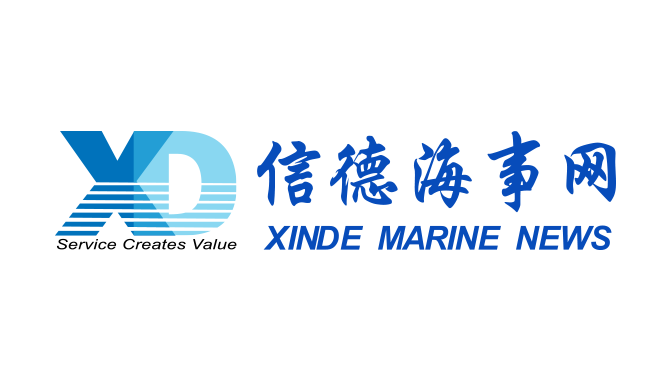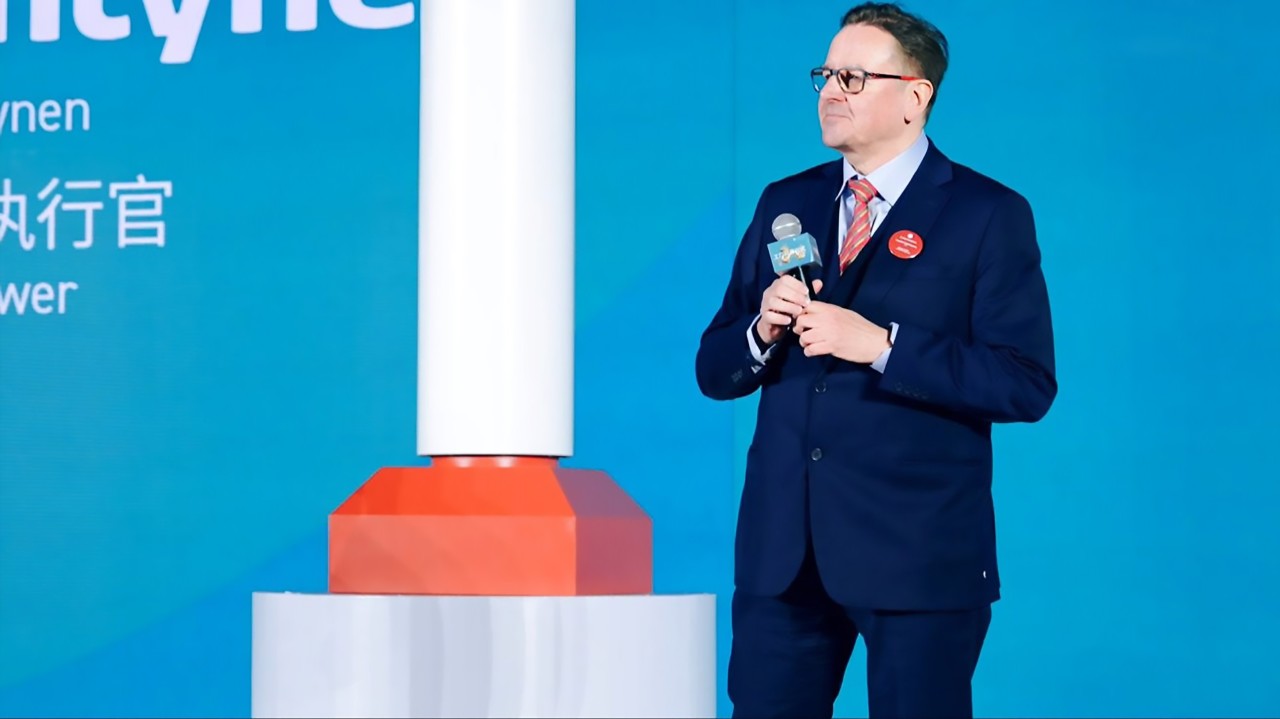The global shipping industry is undergoing a revolutionary transformation, development of decarbonization will become a primary melody in the coming decades. As the heart of the ship, marine engines are the key to meet the challenge of decarbonization. WinGD (Winterthur Gas & Diesel) is a leading developer of low-speed gas and diesel engines for marine propulsion with extensive experience in future alternative fuel engines.
Recently, the green research team of Xinde Marine News interviewed Mr. Klaus Heim, CEO of WinGD based at the Swiss Headquarters, and Mr. Frank Zhang, Managing Director of WinGD China (Shanghai) to discuss WinGD's product technology, understanding and roadmap for alternative fuel engines for the international market.

1.The products of WinGD are mainly divided into X-DF and X-Engines series. What are the differences between them and what are their future of development?
Klaus:
We have a portfolio of both traditional liquid fuel engines and dual fuel engines capable of running on gas fuels.
The X-engine series is the latest generation of our well proven, long-established engines for liquid fuels. For the traditional fuels in the marine market, diesel and heavy fuel oil, but they are also ready to run on the potential new fuels like liquid Bio-fuels.
Our dual fuel product series, known as X-DF, is our successful new engine series introduced back in 2013. Our dual fuel series engines are capable to run both with liquid and gas fuels, offering possibilities for both types of fuels that are commonly used today in the marine market.
We have been very successful with the X-DF series in the market, mainly in the fields of the LNG carriers. The new technology developments are currently focusing on developing the capabilities for the new fuels we expect to the enter the market.
2.How to understand X-DF2.0, what is the essential improvement over X-DF, and what are the key technology applications?
Frank:
With our current X-DF engines, we have accumulated over 1,000,000 operations hours experience. That means WinGD already has a deep insight on this low-pressure dual fuel technology. Based on this experience we further developed the technology to design our X-DF 2.0 as the next generation of this technology. This new advancement offers our customer the latest technology available to improve efficiency, performance and reduce emissions, especially greenhouse gas.
The X-DF 2.0 technology incorporates the new iCER technology which is intelligence control by exhaust recycling, which has offered significant additional benefits for our customers. Almost all our new X-DF engine projects are now ordered with iCER, and this is not only for LNG carriers, but also for other LNG fueled vessels..
3.The WinGD iCER technology is the key to solving one of LNG fuel's most problems: methane leaks. We want to know what percentage of methane leaks can be reduced by iCER technology. What is its basic principle?
Klaus:
As for the iCER technology, this is something that is important to highlight. This is the background of the methane slip reduction technology as methane slip is something that is in the news all the time. There are plenty of questions around methane slip and the advantages of our technology, the Otto Cycle combustion principle, that we use in our X-DF engines.
With this combustion principle, there is a small occurrence of methane slip. The iCER technology that we just introduced, is a technology that offers the possibility to recirculate the exhaust gas with the remaining methane that has passed the engine and the combustion process without being burned. It's recirculated into the engine and given a second opportunity to burn this methane that has slipped the combustion process. So, it's not leakage, but it's a small amount of methane slipping with the combustion process. But with our new X-DF 2.0 technology, we can reduce this methane slip further, by 50 %.
At the same time, this recirculation principle offers the advantage of a substantial efficiency improvement. When the engine runs on gas, we can improve fuel consumption by 3% and in the diesel modes there is even a 5% efficiency improvement potential due to the iCER technology of our X-DF 2.0.
4. LNG low-pressure dual fuel engines are currently the advantage of WinGD. How do you view the position of LNG fuel in the shipping energy transformation and the change of LNG fuel's share in the future shipping fuel market?
Klaus:
LNG will definitely remain an important fuel, not only now, but also for some years to come. This is because, first of all, LNG offers a greater advantage compared to the traditional liquid fuels,in terms of the greenhouse gas reduction. Running an engine on LNG provides an improvement of greenhouse gases of around 20% to 23 % compared to the liquid fuels, which is already quite a big step.
If you look at how long it has taken the market to make LNG widely available all over the world for marine use, this has been a period of about 10 years, so it has taken a long time to make the infrastructure available so that LNG can be used on a global scale, as a viable marine fuel.
That's one of the main reasons why we will see a similar time frame for the new fuels and the greenhouse gas neutral fuels to be readily available. This means the marine industry will continue to use LNG for quite a number of years. With LNG, besides the fact that the greenhouse gas reduction potential is already quite substantial, it also offers the best possible combustion properties for reducing the entire range of exhaust gas emissions, such as NOx, particulate matter, and sulfur oxide. LNG is the cleanest fuel available on the market for overall emission reduction and it’s available on a global scale. Those are the reasons why we will definitely see LNG used as a marine fuel until 2050.
Methanol and ammonia will become more and more relevant and will penetrate the market step by step. But we will definitely see a similar time frame for what is needed to make the infrastructure available for those new fuels on a global scale, which is needed to offer the full potential of reducing greenhouse gases in marine shipping. Again, we need the benefits of LNG as a relevant marine fuel in the coming years.
5. WinGD's low pressure dual fuel engine is still being used mainly in LNG carriers and large container ships. What is your market expectation for small and medium container ships and dry bulk cargo, tankers and other types of ships?
Frank:
We still have a very strong market share position in the area of LNG carriers and large containers. At the end of January including both running ships and orders, the total X-DF for the LNG carrier was already more than 300 engines. For the big containers we had the landmark order with CMA CGM, for 12X92DF engines, which has demonstrated our strength in this market area. But meanwhile the medium bore X-DF engines have seen uptake in the other vessels segments, for example, the PCTC (pure car truck carrier) is currently mostly LNG fueled. And we have a good market position with our X62DF with our iCER technology and are building market share. We are continuing with the development of the short stroke version of our X52DF and X62DF engines, which are ideal for tankers, feeder containers, bulk carriers and multipurpose vessels.
We are confident we will continue to grow in these segments, while retaining our strong position in the LNG carrier and larger container section.
6.WinGD gave timetables for methanol and ammonia-fueled engines in 2024 and 2025. This is a little later than MAN's product. What are our advantages compared with MAN?
Klaus:
When we talk to customers and partners in the Marine industry, everyone is talking about the new fuels. When can they be introduced? That's a valid question, but we must keep in mind that the entire marine industry has changed focus towards these new greenhouse gas neutral fuels within a very short period of time. Two years ago, in 2020,the entire marine world was focused on liquid fuels and on the new sulfur cap for heavy fuel and that was the center of discussion for everyone. People talked about heavy fuel, low sulfur, scrubbers, and LNG but now, two years on, the focus has completely changed, introducing the 2050 greenhouse gas targets.
We have our road map for developing and making our engines available for those new fuels. This roadmap has fixed 2024 for the first methanol engine running in the field and 2025 for ammonia. This timetable meets our customer’s expectations to get those new fuels running on first pilot installations, where we and our customers will gather the experience with these new fuels in real ship operation. At the same time, we also have to be aware that those will be the first pilot installations and that's the same for our competitor, but the final schedule for the introduction of those new fuels, methanol and ammonia will be determined by the availability of the fuels.
And then your last question relating to LNG, when we talk about the availability of those new fuels, we have to be aware that this will take quite a long time until the global fuel industry will be able to invest to make this global infrastructure available.
The dates of 2024 and 2025 are just the first steps in getting pilot installations into the market. But then later on, there will still be a period of maybe another 10 years, a similar time frame as it took for LNG, to be sure that those fuels are available on a global scale. In order to achieve this substantial greenhouse gas reduction that the whole shipping industry is aiming for, we will see a transition period for at least 10 years where the new fuels will penetrate into the market more and more. But still, the traditional fuels, the liquid fuels, and also LNG, will be used for quite a long time.
The second part of your question regarding MAN, our advantage compared to our competitor is that we have many years of experience with both types of combustion processes, the Otto Cycle and the Diesel Cycle. The Otto Cycle is for both the gas fuels and liquid fuels which is our X-DF engine that we have had in the market now with a running experience of over one million running hours. So, we have experience with both combustion principles, low pressure, and high pressure for liquid fuel and for gaseous fuels.
While our competitor has just introduced their Otto Cycle generation, engine just a year ago, these 1,000,000 hours of running operation with our X-DF is a huge advantage. We know both combustion concepts very well, and we can adapt and further develop both concepts for the new types of fuels, and adjust them in a way that we use the best available combustion concept for each of the new fuels. Based on this long and deep experience we have with both; we see a clear advantage compared to our competitor.
7.Currently, biogas and liquid biofuel can be used in X-DF and X-Engines respectively. Which series of Engines will be used for alternative fuels such as methanol and ammonia? Will there be any new series of Engines developed in the future?
Frank:
Our X-engine and X-DF engines, already have the ability to burn both renewable synthetic LNG and bio-LNG which some owners have already invested in their use to reduce their emissions.
Also, by blending renewable synthetic energy and bio energy, it is possible to further reduce the greenhouse gas emission.
At WinGD we will continue to develop our engines to tackle all fuel developments be it liquids or gas. Our advantage in this development is the flexibility in the fuel types we are already able to offer, and this will be essential for owners in the future. We offer the ship owner flexibility in the future fuel they choose.
8.WinGD's solution ecosystem includes digital solutions. What digital products do we have now and what are their roles?
Klaus:
In 2018, so four years ago, we introduced our WiDE product, WiDE means WinGD Integrated Digital Expert. It is a comprehensive digital solution that monitors the engine and operating condition online, which means the system collects all kinds of operational data. In real time, it analyzes data based on advanced algorithms and certain machine learning algorithms, examining the condition the engine is running. It also optimizes and adjusts the operating parameters of the engine in order to improve efficiency and analyze the condition of certain components on the engine in terms of the main required maintenance.
That means we can also adjust and optimize the maintenance schedules of the engine for certain components. Due to this advanced monitoring function, it allows support for trouble shooting. In the occurrence of a problem or some abnormal running condition, detected by WiDE, we can give recommendations to the ship operators on how to adjust the running conditions. We can offer the crew trouble shooting advice, with this comprehensive digital support, which as time goes on will be further enhanced and expanded.
With new technologies being introduced, the iCER technology for example, we will incorporate these into this data analysis and expert tool. In future we also expect that this will change the business model in our industry, because we are now not only selling engines, but providing comprehensive support both in person and through our digital solutions.
9.Most people think WinGD is just an engine product company, but I think WinGD is more like a technology company. What do you think of the IMO theme of this year's World Maritime Day: "New Technologies for Greener Shipping" ?
Klaus:
Your first comment is very right. We are developing products for our customers, but we also see ourselves as a technology company, because our industry is very much technology focused. It's exactly right the focus and the investments within the shipping industry nowadays have to be put on those new technologies for greener shipping. And that is where we put a major part of our R&D investments. We have just recently announced a 30 million Euro investment program for the new future fuels.
So those fuels that we’ve already talked about, mainly methanol and ammonia, require substantial investments into those new technologies, developing the technologies, adapting the available combustion concepts and technologies to be capable to run our engines on those new fuels.
This is a major step for us in supporting the transition of the marine industry towards these new fuels, but it's not only about new fuels. Just a year ago we launched a new technology arrangement which we call the hybrid energy systems. That means that besides the new fuels, we look at how we offer our customers the possibility to combine a traditional marine engine with the hybrid systems, with a shaft generator and a battery hybrid installation on board. We also offer the complete energy management system from new hybrid systems because that is yet another way to move us closer to a greener shipping community.
10.Last three questions is about CSSC and Chinese market. First, CSSC become the sole shareholder of WinGD in 2016. What support and help did CSSC bring to WinGD?
Klaus:
CSSC is one of the biggest shipbuilding groups in the world, being part of this big group has quite a number of advantages for WinGD. Firstly, we have a close relationship with shipyards, ship design companies and also to the engine makers. This has improved these relationships significantly helping us to better understand the needs of our customers.
We have a range of customers from engine makers, because we design engines and sell the license to build the engines, but our customers are also the shipyards and ship owners because they are the ones buying the engine from the engine makers and putting them onboard their ships, and the third category of customers is the ship operators, because they operate our engines.
Understanding this full range of customers and their needs much better, is an advantage of this new shareholder of CSSC in WinGD. But in addition to that the possibilities to cooperate much closer within the group is another huge advantage of this business set up.
Within the CSSC group, there is not only shipbuilding and engine building, but there are also engineering companies. We cooperate often with those engineering companies, in the fields of engine and technology development in the innovation, research, and aftercare services. So, there is a wide range of new corporation possibilities, new support and closer access to our market.
11.What impact on WinGD's product strategy as CSSC become a board member?
Klaus:
Though WinGD is part of the CSSC group, WinGD is still an international company with a global market. We develop two stroke engine technologies for all kinds of shipping segments, and also for all countries where ships and engines are built.
From that perspective, the fact that we became part of CSSC has not changed our market strategy and has not changed our product portfolio strategy, because that is still the strategy that we develop and that we offer to make products available for the entire global shipping industry.
But what has changed through CSSC is that it has enlarged our global resources, as explained with this extended access to our customer base and with the collaboration possibilities. So being part of the group is helping us to be faster in developing new products and technologies for our global customer base.
12.What do you think about the development of the Chinese market,and what is the characteristics of Chinese shipowners and shipyards choosing alternative fuel engines?
Frank:
We know that due to the high-speed economy development in China, it is not only a big ship building country, but also a very large ship owner country. Especially over the last two or three years, the Chinese local owners play a more and more important role in the global economy. The Chinese shipyards are currently developing very significantly their technology, capacity,quality, and service capabilities.
From an environmental perspective the Chinese government also is due to set up clear targets relating to carbon emission controlling. So that means we must get this peak carbon emission before 2030 and achieve carbon neutral status before 2060. This is very clear that the Chinese ship owners and shipyards and other relative partners must contribute to this clear target.
And as many in the market, the Chinese market are also concerned with the safety, fuel availability and the efficiency of the carbon emission reduction technology that alternative fuels present.
Klaus:
In general, when we talk about the importance of the Chinese market, that is something that's quite important. For WinGD in the last couple of years, China has become a stronger and stronger shipbuilding country.
China now has the the biggest combined capacity with shipyards, ship design companies, engine builders and customers. This is not because we are part of the Chinese CSSC group, it’s due to the importance of China as a country, as a big player or the main player in this business we are in.. That's why we have a very strong focus on the Chinese market, on our ability to meet the needs and the priorities for our Chinese customers and ship builders.
Source: Xinde Marine News
The opinions expressed herein are the author's and not necessarily those of The Xinde Marine News.
Please Contact Us at:
media@xindemarine.com


 Dr. Harry S. Banga and Mr. Angad Banga of The Carav
Dr. Harry S. Banga and Mr. Angad Banga of The Carav  Liberian Registry Welcomes Kyle Hurst as Senior Vic
Liberian Registry Welcomes Kyle Hurst as Senior Vic  KATALIST: Accelerating Green Shipping through Innov
KATALIST: Accelerating Green Shipping through Innov  Revealing the risks: digital solutions for complian
Revealing the risks: digital solutions for complian  Beibu Gulf Port Chairman Zhou Shaobo Passes Away at
Beibu Gulf Port Chairman Zhou Shaobo Passes Away at  Exclusive Interview with Norsepower CEO: Bringing S
Exclusive Interview with Norsepower CEO: Bringing S